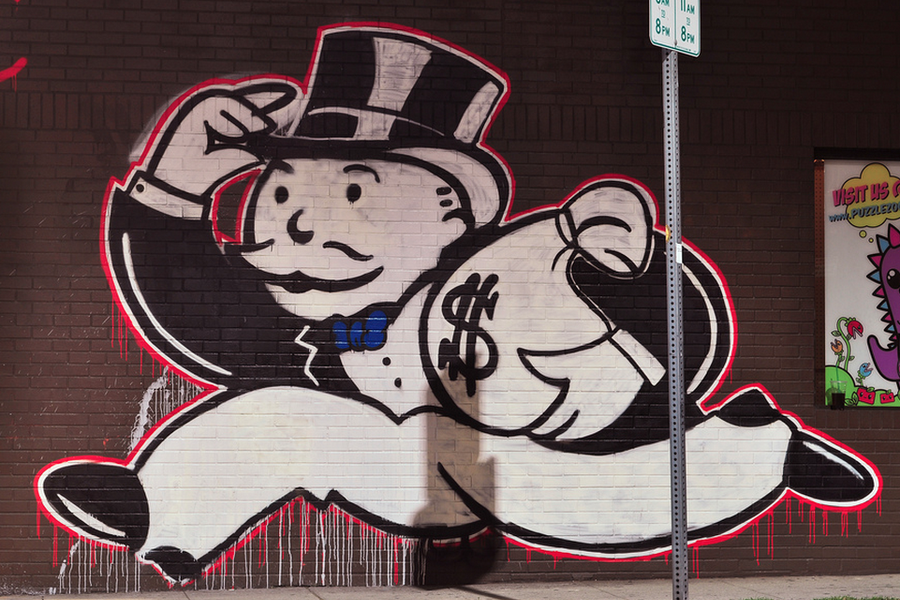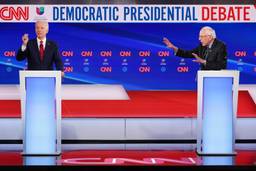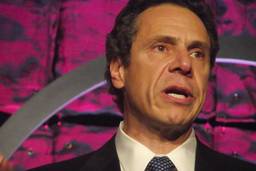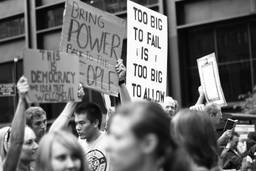Big Tax Bills for the Poor, Tiny Ones for the Rich
Regressive state and local tax policies don’t just harm the poor—they harm entire economies.
David Sirota

American politics are dominated by those with money. As such, America’s tax debate is dominated by voices that insist the rich are unduly persecuted by high taxes and that low-income folks are living the high life. Indeed, a new survey by the Pew Research Center recently found that the most financially secure Americans believe “poor people today have it easy.”
The rich are certainly entitled to their own opinions — but, as the old saying goes, nobody is entitled to their own facts. With that in mind, here’s a set of tax facts that’s worth considering: Middle-and low-income Americans are facing far higher state and local tax rates than the wealthy. In all, a comprehensive analysis by the nonpartisan Institute on Taxation and Economic Policy finds that the poorest 20 percent of households pay on average more than twice the effective state and local tax rate (10.9 percent) as the richest 1 percent of taxpayers (5.4 percent).
ITEP researchers say the incongruity derives from state and local governments’ reliance on sales, excise and property taxes rather than on more progressively structured income taxes that increase rates on higher earnings. They argue that the tax disconnect is helping create the largest wealth gap between the rich and middle class in American history.
“In recent years, multiple studies have revealed the growing chasm between the wealthy and everyone else,” Matt Gardner, executive director of ITEP, said. “Upside-down state tax systems didn’t cause the growing income divide, but they certainly exacerbate the problem. State policymakers shouldn’t wring their hands or ignore the problem. They should thoroughly explore and enact tax reform policies that will make their tax systems fairer.”
The 10 states with the largest gap between tax rates on the rich and poor are a politically and geographically diverse group — from traditional Republican bastions such as Texas and Arizona to Democratic strongholds such as Illinois and Washington.
The latter state, reports ITEP, is the most regressive of all. Four years after billionaire moguls such as Amazon’s Jeff Bezos and Microsoft’s Steve Ballmer funded a campaign to defeat an income tax ballot measure, Washington now makes low-income families pay seven times the effective tax rate that the rich pay. That’s right, those in the poorest 20 percent of Washington households pay on average 16.8 percent of their income in state and local taxes, while Washington’s 1-percenters pay just 2.4 percent of their income. Like many of the other regressive tax states, Washington imposes no personal income tax all.
“The problem with our state tax systems is that we are asking far more of those who can afford the least,” concludes ITEM’s state director Wiehe.
By contrast, the states identified as having the smallest gap in effective tax rates are California, Delaware, Minnesota, Oregon and Vermont — all Democratic strongholds and all relying more heavily on progressively structured income taxes. Montana is the only Republican-leaning state ITEP researchers identify among the states with the least regressive tax rates.
Of course, if you aren’t poor, you may be reading this and thinking that these trends have no real-world impact on your life. But think again: In September, Standard & Poor’s released a study showing that increasing economic inequality hurts economic growth and subsequently reduces public revenue. As important, the report found that the correlation between high inequality and low economic growth was highest in states that relied most heavily on regressive levies such as sales taxes.
In other words, regressive state and local tax policies don’t just harm the poor — they end up harming entire economies. So if altruism doesn’t prompt you to care about unfair tax rates and economic inequality, then it seems self-interest should.
David Sirota is an award-winning investigative journalist and an In These Times senior editor. He served as speechwriter for Bernie Sanders’ 2020 campaign. Follow him on Twitter @davidsirota.








